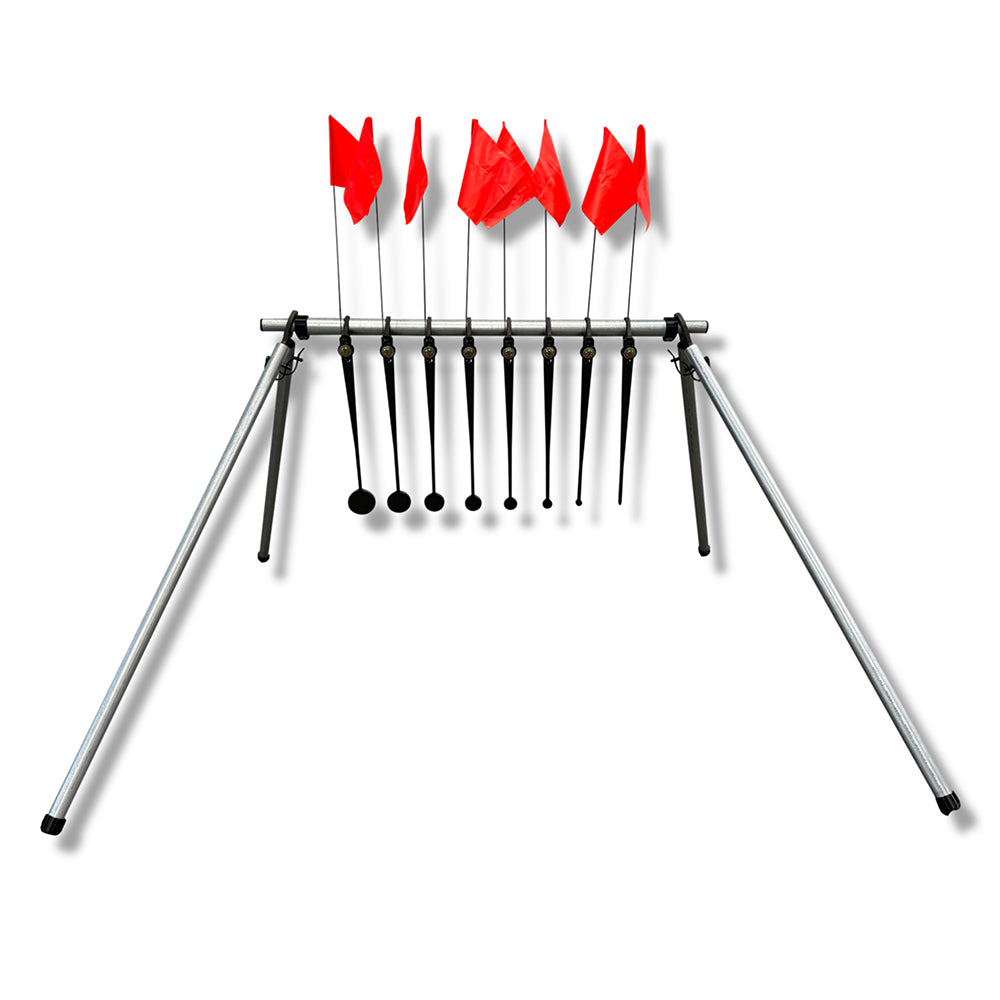So, we are jumping in with both feet locally. We have been doing PRS type matches for a while, but now trying to lock it down a bit more.
Things I’ve noticed that differ a lot from centerfire:
A dirt berm matters much more in Rimfire. If you can easily see your misses, you can make the target substantially smaller. If you can’t, you need a much larger plate or a lot of shooters will start either A: posting up zeros or low scores or B: luck plays a huge factor when someone either makes good wind call or sees so many people try something they get the call.
It’s either too easy for the top pack while adequate for the rest. Or it’s challenging for the top pack and the rest of field gets crushed. It’s much harder to make a middle ground match in Rimfire than centerfire (there are other reasons for this besides target size, but lets focus on targets here).
So, what I’m looking to do is to make a suggestion matrix for our local MD’s. Basically:
“Use 2 moa until 100 yds. Then depending on berm: 3moa berm or 4moa no berm from 100-250yds. 4 moa berm or 5moa no berm from 250 to 350yds”
And then suggestions for slightly harder matches such as a finale or special match.
So, I’m going to make a list of possible outlines, and I’m asking anyone here to either use the outline to give suggestions or if you think the parameters should be different, give your thoughts in general. I’m looking for answers in MOA target size.
Here’s my preliminary matrix:
(note that I’m defining positional as barricade/prop shooting. Not as unsupported/sling shooting)
Standard Club Match Difficulty (90-95% acceptable for winner of match) 2min stages
25-125 yds
Prone Berm: ?
Prone No berm: ?
Positional Berm: ?
Positional No Berm: ?
125-225yds
Prone Berm: ?
Prone No berm: ?
Positional Berm: ?
Positional No Berm: ?
225-350yds
Prone Berm: ?
Prone No berm: ?
Positional Berm: ?
Positional No Berm: ?
Finale or special difficulty (80% acceptable for winner of match) 1:40 stages
25-125 yds
Prone Berm: ?
Prone No berm: ?
Positional Berm: ?
Positional No Berm: ?
125-225yds
Prone Berm: ?
Prone No berm: ?
Positional Berm: ?
Positional No Berm: ?
225-350yds
Prone Berm: ?
Prone No berm: ?
Positional Berm: ?
Positional No Berm: ?
Things I’ve noticed that differ a lot from centerfire:
A dirt berm matters much more in Rimfire. If you can easily see your misses, you can make the target substantially smaller. If you can’t, you need a much larger plate or a lot of shooters will start either A: posting up zeros or low scores or B: luck plays a huge factor when someone either makes good wind call or sees so many people try something they get the call.
It’s either too easy for the top pack while adequate for the rest. Or it’s challenging for the top pack and the rest of field gets crushed. It’s much harder to make a middle ground match in Rimfire than centerfire (there are other reasons for this besides target size, but lets focus on targets here).
So, what I’m looking to do is to make a suggestion matrix for our local MD’s. Basically:
“Use 2 moa until 100 yds. Then depending on berm: 3moa berm or 4moa no berm from 100-250yds. 4 moa berm or 5moa no berm from 250 to 350yds”
And then suggestions for slightly harder matches such as a finale or special match.
So, I’m going to make a list of possible outlines, and I’m asking anyone here to either use the outline to give suggestions or if you think the parameters should be different, give your thoughts in general. I’m looking for answers in MOA target size.
Here’s my preliminary matrix:
(note that I’m defining positional as barricade/prop shooting. Not as unsupported/sling shooting)
Standard Club Match Difficulty (90-95% acceptable for winner of match) 2min stages
25-125 yds
Prone Berm: ?
Prone No berm: ?
Positional Berm: ?
Positional No Berm: ?
125-225yds
Prone Berm: ?
Prone No berm: ?
Positional Berm: ?
Positional No Berm: ?
225-350yds
Prone Berm: ?
Prone No berm: ?
Positional Berm: ?
Positional No Berm: ?
Finale or special difficulty (80% acceptable for winner of match) 1:40 stages
25-125 yds
Prone Berm: ?
Prone No berm: ?
Positional Berm: ?
Positional No Berm: ?
125-225yds
Prone Berm: ?
Prone No berm: ?
Positional Berm: ?
Positional No Berm: ?
225-350yds
Prone Berm: ?
Prone No berm: ?
Positional Berm: ?
Positional No Berm: ?
Last edited:


